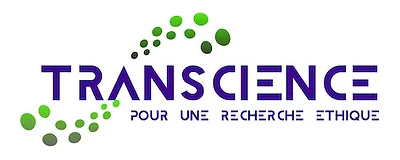As part of the European Horizon 2020 program (the European Union’s research and innovation funding program for the years 2014 to 2020), 16 projects had focused on the development of animal-free, in vitro or in silico research, to the tune of 90 million euros.
Among these projects, “EU Tox Risk“received a budget of 30 million euros for 6 years, involving 39 partners including Ineris for France, industrialists such as L’Oréal or Roche, universities, etc.
It is described as “an integrated flagship program for the conduct of toxicity testing and risk assessment in the 21st century”. The vision is to “drive the paradigm shift in toxicological testing from the ‘black box’ of animal testing to toxicological assessment based on human cell responses and a full mechanistic understanding of the cause-effect relationships of harmful chemical effects.”
This project covers the complex fields of toxicology: systemic repeated-dose toxicity (using the lungs, kidneys, liver and nervous system as examples of potential target organs) and developmental and reproductive toxicity, including endocrine disruptors.
Another major project is “VAC2VAC“, collaborative research funded by the “Innovative Medicines Initiative” (IMI) that aims to develop and validate quality testing approaches for human and veterinary vaccines using non-animal methods. The initiative began on March 1, 2016.
VAC2VAC is a public-private consortium of twenty partners, involving experts from the veterinary and human vaccine industry in partnership with official drug control laboratories, universities and translational research organizations. To achieve their goal, the partners must develop, optimize and evaluate physico-chemical and immunochemical methods, cell-based assays and others for routine testing of vaccine quality, safety and efficacy. This is done in collaboration with regulatory bodies.
New projects started in 2021 under the Horizon Europe 2021-2027 program; 84 million allocated, including 60 million over 5 years awarded for 3 projects on the safety control of animal-free chemicals.
- The project “Risk Hunt 3R” is the successor to “EU Tox Risk” (with 37 partners, coordinated by Leiden University in the Netherlands, and a grant of 23 million). This project will establish, optimize and assemble all the essential elements of safety testing: exposure assessment, information on distribution in the body, risk characterization, prediction of adverse effects and determination of actual risk in defined scenarios. The project combines human exposure scenarios, in vitro testing and in silico methodologies to identify toxic response pathways in a truly human-centered approach. “RISK-HUNT 3R” will engage with all stakeholders from different industry sectors and international regulatory agencies to critically evaluate and ensure genuine acceptance of the new safety testing framework. It will encourage the commercial exploitation of validated safety assessment approaches, ensuring the sustainability of project results and strengthening the innovation capacity of the industrial sectors concerned.
- 15 organizations coordinated by the University of Birmingham have launched the project “PrecisionTox” (with a grant of 19.3 million), developing the notion of precision toxicology, which seeks to establish a new paradigm of cost-effective, 3R-compliant, testing for chemical safety assessment, identifying biomarkers of key molecular events predictive of adverse human health effects of chemicals, and facilitating their adoption into regulatory and industrial practice. The project focuses on human cell lines and models considered non-sentient (Drosophila fly, water flea, roundworm, zebrafish and frog embryos). These inexpensive models will make it possible to map the origins of toxicity on the evolutionary branches of the animal kingdom, to predict the harmful effects of chemical substances on all animals, including man. In this respect, project is an excellent example of comparative toxicology.
- Coordinated by the Vrije Universiteit Brussels, the project “ONTOX” (with a grant of 17.2 million) aims to develop a generic strategy for creating new innovative approach methods (NAMs) capable of predicting chronic toxicity in humans, taking into account targeted exposure. The methods developed by the 18 partners are based on the collection of available information on chemicals (biological, mechanical, toxicological, epidemiological, physico-chemical and kinetic) and a computational system based on artificial intelligence (AI) to assess the toxic effects induced by all types of chemicals (pharmaceuticals, cosmetics, food and biocides). For proof-of-concept purposes, the focus will be on 6 specific NAMs addressing problems in the liver (steatosis and cholestasis), kidney (tubular necrosis and crystallopathy) and developing brain (neural tube closure and cognitive function abnormalities). Data gaps identified by AI will be filled by targeted in vitro and in silico testing. Project ‘s ambition is to consolidate Europe’s position as world leader in the development, operation, regulation and application of animal-free methods for assessing the risks of chemicals to humans.
These three projects are associated within the ASPIS cluster (“Animal-free Safety assessment of chemicals: Project cluster for Implementation of novel Strategies”): click here
In addition, 24 million has been allocated to 4 projects on next-generation organs-on-a-chip:
- functional heart,
- brain-gut axis for infectious diseases,
- lymph node to study personalized treatments for metastases,
- synovium for rheumatoid arthritis.
Other calls for projects are regularly launched under Horizon Europe on New Methodological Approaches:
– April 11, 2024 (2 million euros) : Gaining experience and confidence in New Approach Methodologies (NAM) for regulatory safety and efficacy testing – coordinated training and experience exchange for regulators
– September 19, 2023 and April 11, 2024 (€25 million): Innovative non-animal human-based tools and strategies for biomedical research
– January 16, 2024: Accelerating the implementation of New Approach Methodologies and other innovative non-animal approaches for the development, testing and production of health technologies




